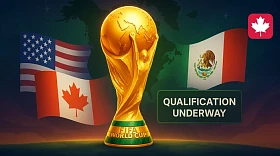How Do Casinos Make Money on Poker? Breaking Down the Hidden Mechanisms Behind the Game
Poker is not just a game. It is an entire industry where skill, psychology, mathematics and, of course, money intersect. And for many people, poker is associated with excitement, strategy and the chance to win a big pot. But behind all that emotion and adrenaline lies cold calculation of casinos that do not engage in charity, but build a business using the players' love for this game.
A logical question arises: how does a casino make money on poker if players play against each other? After all, unlike slots or roulette, where the establishment always has a mathematical advantage, poker is arranged differently. Here, the outcome of the game depends on the skill, experience and luck of the participants themselves. However, a casino is a place where money always flows in one direction: to the owners. Want to know how they do it? In this article, we will analyze the main mechanisms for making money on poker, myths and real figures, as well as how profitable it is in comparison with other gambling games.
Content:
Myths about casino earnings on poker
Poker is surrounded by many myths and misconceptions, especially among beginner players. Some of them are sure that the casino "lets you play for free" because it allegedly only makes money on alcohol and food. Others think that poker is an unprofitable game for the casino, and tournaments and cash games are held rather to attract attention. But the reality is much more prosaic: poker is an excellent source of income, and the mechanism for earning money is thought out to the smallest detail.
Myth 1: Casinos don't make money on poker
This myth is popular among newbies who do not delve into the details. At first glance, it seems that the casino simply provides tables, chips and cards, and the players themselves play for money among themselves. However, each casino has its own "secret key" to profit, which we will discuss in the following sections.
Real-life example: In Las Vegas, at the famous Bellagio casino, cash poker games bring in millions of dollars a year just because of one simple mechanism: the rake. Players don't even notice how their winnings and losses gradually "flow" into the casino's cash register.
Myth 2: Poker is only profitable for professional players
Yes, professional players like Phil Ivey, Daniel Negreanu, and Doyle Brunson do make millions playing poker. But they don’t shy away from the costs of playing in a casino. For example, in cash games, every professional pays a rake, and in tournaments, a commission on every buy-in. These amounts may not be noticeable in the short term, but in the long run, they add up to a decent amount.
Myth 3: Online poker is completely free
In online casinos and poker rooms like PokerStars or 888poker, players also think that their money "doesn't go anywhere." But in reality, online platforms take rake or tournament fees, just like in live casinos. Moreover, due to the automation of processes, these fees can be even higher than offline.
Why don't players notice losses?
Casinos create the illusion of fairness and freedom of play. You see beautiful tables, smiling dealers and feel the excitement, but rarely does anyone think about the fact that each hand brings profit to the casino. This is because poker is perceived as a game "against others", and not against the house.
Fun fact: On average, players lose about 5% of each pot to rake. For a casino with 10 active tables, this could mean tens of thousands of dollars a day.
Linked materials
The main mechanisms of casino earnings on poker

When it comes to poker, casinos typically use three main methods to make money: rake , hourly table fees , and tournament fees . These tools are so subtly integrated into the game that many players don't even notice how part of their money is slowly "flowing" to the owners of the establishment.
Rake: money from each pot
Rake is probably the most well-known way to make money in poker. The casino takes a small percentage of each pot played. Typically, this percentage varies from 2% to 10%, but almost always has a maximum limit (for example, $5 or $10 per pot).
- Example: In live casinos in Canada, the standard rake is about 5% of the pot, up to $10. If the pot was $200, the casino would take $10, leaving the players to "negotiate" for the remaining $190.
Rake in online poker
Online poker, unlike live poker, has a more flexible rake system. For example, at PokerStars the rake may be lower, but the number of hands played per hour is higher due to automation. As a result, the casino receives a significant amount per table even with a low percentage.
How does rake affect players?
Rake has a significant impact on your strategy, especially at micro stakes. If you're playing with the minimum stakes, rake can eat up a significant portion of your winnings. For example, if the pot is $10 and the rake is 10%, you're left with only $9. In the long run, this turns the game into a kind of "running in circles" where winning becomes increasingly difficult.
Time Collection: Hourly rate for tables
Another way casinos make money is through the so-called "hourly fee" . Unlike rake , where the casino takes a percentage of the bank, here players pay a fixed amount for a certain amount of time of play.
This system is usually used in high-stakes cash games, where the rake becomes unprofitable for the players. However, it remains extremely efficient for the casino: the table makes money regardless of how many pots are played.
Tournament Commissions: Buy-ins and Fees
Tournaments are not only a popular game format, but also an important source of income for casinos. When players register for a tournament, they pay a so-called buy-in , part of which goes to the prize pool, and the rest remains with the casino.
- Example calculation : If the buy-in is $100+$10, then $100 goes to the prize pool, and $10 is the house commission. With 100 participants, the casino gets $1,000 just for organizing the tournament.
Guaranteed Prize Pools: Risk or Reward?
Some tournaments offer guaranteed prize pools, such as $1,000,000. If the number of participants is not enough to cover this amount, the casino will have to add money from its own pocket. However, such cases are rare: smart marketing almost always ensures the required number of participants.
Fact: In 2022, the WSOP (World Series of Poker) series brought in more than $50 million in buy-in fees alone.
What makes casino earnings mechanisms attractive?
Each of these methods works because they are invisible and not perceived as "stealing" by players. Players are focused on their cards, strategy, and trying to beat each other. At the same time, the casino is carefully collecting its profits with each hand or tournament entry.
Linked materials
Additional ways to earn money from poker
While rake, hourly fees, and tournament fees are the main sources of income, the casino is not limited to them. The poker area is a magnet that attracts people willing to spend money not only at the table, but also beyond it.
1. Bar and restaurants: money spent outside the game
Poker players are the target audience for casino bars and restaurants. Long hours at the table lead to a need for food and drink, and the prices in the establishment are usually inflated.
Casinos also often offer free drinks to attract players, but the "free" part is deceptive: it is already covered by the game fees.
2. Attracting new clients through poker
For casinos, poker is not only a way to make money here and now, but also a marketing tool. Tournaments, especially large ones, attract a huge number of people. Players come to fight for prize funds, but along the way they "accidentally" drop in to slot machines, roulette or blackjack.
Fact: In 2019, the WSOP saw over 8,000 players in the Main Event alone. That's a huge influx of customers spending money on slots, restaurants, and other games.
3. VIP programs and additional fees
For regular players, many casinos offer VIP programs with bonuses, cashbacks, and other perks. However, these programs are also profit-oriented: to earn points or bonuses, players must actively participate in games, which means paying rake or fees.
Additional ways to make money are just the tip of the iceberg. Casinos will always find ways to increase their profits, whether it's by charging inflated prices for drinks or using poker as a marketing ploy. But the main lesson here is that casinos never operate at a loss, and every aspect of the poker area is designed to maximize revenue.
Next, we'll talk about the differences in earnings between live casinos and online platforms, and find out who makes more money playing poker.
The difference between live and online casinos
If live casinos are associated with an atmosphere of luxury and show, then online casinos are about convenience and accessibility. However, behind the scenes, each of them works for the same goal: to maximize profits from players. The difference between these formats becomes especially obvious in poker.
Who makes more money from poker: physical casinos or online platforms?
Online poker tends to make more money for owners because of its scalability and automation. Instead of managing dozens of tables, staff, and infrastructure, online poker rooms can handle thousands of players at a time on virtual tables.
- Fact: The global online poker market was valued at $8.8 billion in 2023, and this figure continues to grow thanks to accessibility and innovation.
At the same time, live casinos depend on the number of visitors, which limits their earning potential. However, they compensate for this by having high margins in other games (slots, roulette, etc.).
Peculiarities of rake in online poker
The rake online is often lower than in live games, but is offset by the huge number of hands played in a short period of time. For example:
- In a live casino: Average speed is about 30 hands per hour.
- In an online room: One table can generate up to 100 hands per hour. And if a player participates in several tables at the same time, the platform's income increases dramatically.
Example:
At PokerStars, the standard rake for micro-limits is 5% of the pot, up to a maximum of $3. With 100 hands per hour per table, the poker room can earn $300. With thousands of players at the tables, the profits become astronomical.
Online Casino "Honesty": Myths and Reality
Many players are afraid that online casinos manipulate the results of the game, but in fact, poker rooms are not interested in cheating. Their business model is based on a stable profit from the rake . The main difference is that online is highly competitive: a platform offering a lower rake and favorable bonuses will attract more players.
Fun fact: Poker rooms use random number generators (RNG) to deal cards. Licensed operators are required to undergo regular audits to prove that their RNG is honest.
How much does a casino really make from poker?

It's time to move on to specific numbers and understand how profitable poker is for the casino. Let's look at some examples.
Real rake profit figures
Depending on the popularity of the poker zone or online platform, earnings can amount to millions of dollars per month.
Example 1: Niagara Fallsview
- On average, the Niagara Fallsview Casino earns about $2 million a month from poker games alone. A steady stream of tourists and professionals makes this poker room one of the most profitable in the world.
Example 2: GGPoker Online Platform
- In 2023, GGPoker, one of the largest online platforms, earned around $100 million in net profit, the majority of which came from rake and tournament fees.
Poker Profitability Compared to Other Games
Although poker brings in significant revenue, casinos prefer games with higher margins, such as slots and roulette. The reason is simple: in these games, the house has a guaranteed advantage. In poker, revenue depends on the activity of the players.
- Slots: Margin up to 15%.
- Poker: Average margin is around 5% (rake).
However, poker plays a strategic role in attracting people who may then try other games.
The Future of Poker as a Source of Income
Online poker has seen rapid growth thanks to its accessibility and technological innovation. This growth has been particularly noticeable in recent years, when the pandemic forced players to move to virtual spaces. The online poker market is predicted to reach $10 billion by 2030.
The Impact of Regulators on Casino Revenues
More and more countries are introducing strict licensing rules, which directly affects casino revenues. For example, in Europe, platforms are required to pay high taxes on gaming revenue, which makes some regions less profitable.
- Fact: In Germany, the online poker turnover tax is 5.3%, which is forcing many operators to leave the market.
New technologies: VR and artificial intelligence
Virtual reality (VR) and artificial intelligence (AI) are changing the rules of the game. In the future, we may see:
- VR Poker: An immersive experience where players will sit at virtual tables, interacting as if they were in real life.
- AI Bots : Although casinos prohibit the use of bots, their development can affect the game strategy.
Despite the growth of other forms of gambling, poker will always be interesting due to its combination of strategy and luck. Casinos will continue to make money from the game, finding new ways to increase their revenue.
Conclusion
Casino poker is not just a game, but a carefully thought-out business where every aspect is aimed at making a profit. Casinos earn millions thanks to rake, tournament commissions and related services. Live casinos turn poker into an atmospheric show where players do not notice their losses, and online platforms scale their income through automation and a huge audience.
Although poker brings in less profit for the casino than slots or roulette, it remains an important element of the strategy of attracting customers. Players return for the atmosphere, strategy and the chance to beat their opponents. And the casino, in turn, never misses an opportunity to earn money, remaining "always in the black."
For players, it is important to understand that behind the scenes of each hand there are mechanisms that quietly but effectively suck out money. Knowing this, you can better manage your finances and enjoy the game, minimizing losses.




FlameKiller1 Cool selection! Thanks to the author, I was just looking for something to ride on the weekend.



Hellworkers So much for "consumer care". As soon as they are strangled with taxes, everyone will really go to left-wing offices.
















































the article is fire but it's too long
I don't care about the rake at all, I play poker for the adrenaline
Take care of your nerves and money, guys.
In principle, everything is written correctly. But I have doubts about the VR future. I have been playing for 20 years, tried VR poker, the sensations are so-so. A live game is a live game.
Can anyone recommend a poker room with a minimum rake for micro limits? I'm learning to play, every dollar counts...